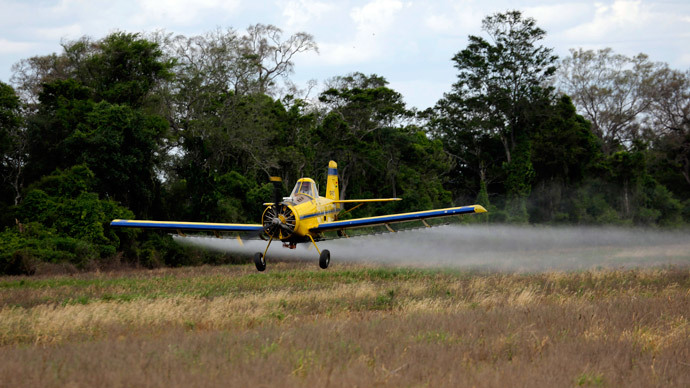Pesticides blamed for spike of illnesses in Washington state

Washington state health officials are pointing the finger at pesticides as they try to explain the recent surge in illnesses in the central part of the state.
According to Reuters, approximately 60 people have been struck with some kind of pesticide-related illness since March – ranging from breathing difficulties and skin rashes to nausea. With health officials looking into 15 separate cases of pesticide exposure, the speculation is that the two situations are connected.
So far, the Washington State Department of Health has stated that at least eight people have had to seek emergency medical treatment due to nausea, vomiting, and headaches. Cases have been reported in Adams, Benton, Chelan, Douglas, Franklin, Grant, and Yakima counties.
In a statement to the Associated Press, state health officer Kathy Lofy said the illnesses could be the result of pesticide drift, which occurs when the chemicals are carried away by the wind or not applied properly.
"We're concerned with this spike in potential drift exposures and are calling our partner agencies to work with pesticide applicators on following state and federal rules to prevent drift," Lofy said, state health officer. "Protecting people from unnecessary exposure to these chemicals is a responsibility that needs to be taken seriously."
As reported by the Yakima Herald, all of the recent drift cases have taken place in areas with orchards. When individuals come into contact with the pesticides, they may suffer from eye and skin irritation and have difficulty breathing. According to Reuters, agricultural workers, utility workers, and residents living near orchards are among those who’ve become ill.
“To see this many pesticide drift cases this early in the season is a concern,” Washington state Department of Agriculture spokesman Hector Castro told the Herald.
Although 24,000 pesticide applicators are licensed in the Washington, state and federal law bars the spraying of pesticides that could come in contact with people, even in cases where the wind plays a role in distributing the chemicals. The Department of Agriculture said it is reminding pesticide sprayers to follow regulations and keep track of wind movement in order to avoid making people ill.
Meanwhile, many of the same counties affected by pesticide drift – including Yakima, Benton, and Franklin – have also reported a spike in a rare and deadly birth defect that triples the average rate seen across the rest of the United States. According to NBC News, seven cases of anencephaly, which describes babies born with parts of their brain and skull missing, were counted in 2013, raising the total count since 2010 to 30.
"We're really concerned about the fact that the anencephaly rates are still so high," said Mandy Stahre, an Epidemic Intelligence Service officer with the Centers for Disease Control and Prevention, to NBC. "We were sort of hoping that this may have been a statistical anomaly or would go away."
As RT reported earlier this year, health officials are unsure as to why anencephaly rates have jumped so high in the area. Some experts believe the rise could be linked to prolonged exposure to pesticides, but there has been no clear evidence linking the two.














